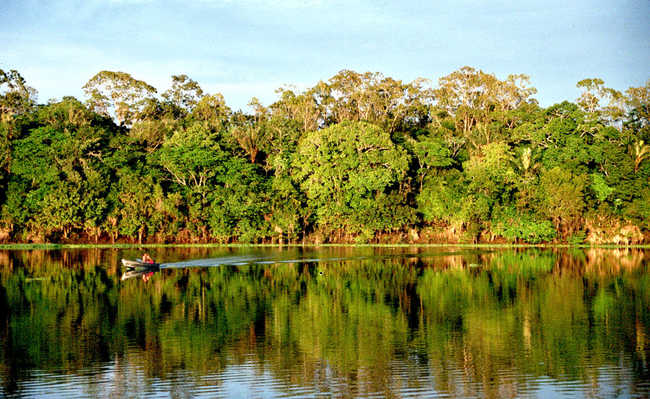Resins: discover different types, composition and millenary history
Natural or synthetic, these substances are very important and widely produced and used

Have you ever heard of resins? This subject may not be well known or discussed very often, and thus, you will probably be surprised to realize that resins are widely present both in nature, spontaneously and intelligently, and in the manufacture of various products consumed in our daily lives. But after all, what are resins and what are their uses?
Nature is constantly the stage for great demonstrations of intelligence, rhythm, harmony and synchronism. The very motivation that instigates the existence of resins refers to sensitive life and the survival instinct that permeate plants and all beings. They are viscous substances, produced, in most cases, by special cells present in the trunk of some species of trees when they are exposed to disturbances (broken branches, bites from invading insects and cuts along their structure).
This substance 'covers' the lesion in the plant and, despite being moldable at first, it hardens when in contact with the air, offering efficient protection against the loss of vital substances, pathogens and many other risks.

These resins are basically composed of terpenes and derivatives, added to some organic compounds, to a lesser extent, such as essential oils and carboxylic acids - read more in the article "What are terpenes?".
In addition to this mechanism that provides protection for trees, the volatile components present in terpenes, the main component of resins, also release an odor that attracts different animals that feed on herbivorous insects. By doing this, these animals prevent the trees from being harmed by insects and pathologies while the resins have not yet hardened.
The main characteristics of resins are: they are not soluble in water, they harden when in contact with oxygen (they oxidize), they do not play a direct role in the fundamental processes of maintaining plant life and are typically convertible into polymers.
In addition to the natural resins explained briefly above, thanks to an extensive observation of nature and technological advances experienced from the mid-nineteenth century, humans were able to produce resins by synthetic means, through chemical reactions of compounds often obtained in non-renewable sources. But, despite the impacts and dangers, these materials end up fulfilling important roles and addressing modern needs that still remain without other, more sustainable alternatives.
history of use
The exact moment when we humans discovered the resins and started using them is not known for sure, but it is speculated that this has been going on for thousands of years.
It is known that natural resins were widely used and highly valued in religious rituals in ancient Greece and Rome, and also in ancient Egypt, especially resins known as frankincense and myrrh.
In relation to the trade of these substances, it is estimated that amber, in Europe, was already very popular in the Stone Age (3500 BC), while the history of the commercialization of resins can be traced back to at least the Bronze Age (1800 B.C).
Amber is a rigid fossilized vegetable resin, originating mainly from coniferous trees such as pine trees. However, different sources give rise to these fossils and some were dated from 40 thousand years to 310 million years. The beginning of the trade in these substances would have occurred during the Stone Age, even though their use as ornaments and adornments had already taken place hundreds of years before, or even longer.
Also, many artifacts containing amber have been found around the planet (in China and Central America, for example). Apparently, different cultures have given amber great religious importance, perhaps because of its golden tones and its help in protecting and preserving plant life.
Another very important use attributed to resins throughout history refers to their use in the naval environment. They were used in their liquid form, thanks to their waterproofing action, in ropes and tarpaulins and in the wooden structure. They acted as an adhesive to 'seal', waterproof and make ship structures more resistant. They were also widely used as a component of paints and varnishes.
However, the excessive use of some species tends to lead to deforestation and a consequent imbalance in certain ecosystems. New alternatives to produce resins become necessary and, in this context, the first synthetic resins emerged.
The production of synthetic resins is much more recent - the first one is phenolic resin. Phenolic resins are of great importance, as they are considered the first thermoset polymer synthetically produced for commercial use. In 1907 Leo Baekeland was able to develop a phenolic resin in a controlled process, called bakelite (read more in "Understand what phenolic resins are").
Still, many of the synthetic resins produced today come from non-renewable sources, mostly from petroleum. So better alternatives are still needed, so that the production process for these resins can be really sustainable.
Types of resins
natural resins
It is known that different resins are produced in a fantastic and natural way in the environment by different species of trees, seeds, roots and fruits, such as conifers (pines). In a few cases, such as shellac, they can also be produced by insects.
Listed below are some examples of known and used natural resins:
- Amber;
- Incense;
- Turkey balm;
- Castor bean resin;
- Pitch (Amazon Forest);
- South American Copals;
- Lacquer;
- Shellac;
- Myrrh.
synthetic resins
Listed below are some of the main synthetic resins on the market.
- Phenolic resins;
- Epoxy resins;
- Polyester resins;
- Polypropylene resins.










